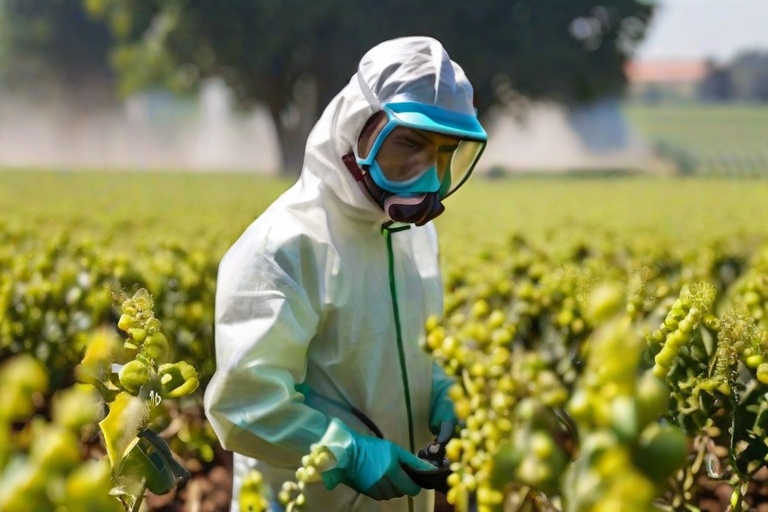Innovations in Chemical Pest Control management
Pest control is of utmost importance in safeguarding the health and productivity of our crops. As the global population continues to soar, the demand for effective pest control methods has reached unprecedented levels. In response to this ever-growing need, remarkable advancements in chemical pest control have emerged, reshaping the landscape of pest management and fortifying the protection of our agricultural resources. In this enlightening blog post, we will delve into the realm of chemical pest control, unraveling the fascinating intricacies of its notable innovations, and contemplating their profound impact on the future of agriculture.

Development of Pest-Resistant Crops
Genetically modified (GM) crops have revolutionized the field of pest control through groundbreaking innovation. By integrating genetic material from naturally pest-resistant organisms into crop plants, scientists have harnessed the power to develop crops that possess inherent resistance to pests. These genetically modified crops have not only reduced the reliance on chemical pesticides but have also shown remarkable effectiveness in controlling pests, ensuring higher crop yields and enhanced food security.
Furthermore, these crops offer a sustainable approach to agriculture, as their built-in defense mechanisms contribute to the preservation of the environment. By minimizing the use of chemical pesticides, GM crops help to mitigate the negative impact of conventional pest control methods on ecosystems and human health. The ability of GM crops to address the challenges of pest resistance and reduce the ecological footprint of agriculture makes them a promising solution for the future of sustainable food production.
Advances in Pest Monitoring Technology
Effective pest control is crucial for maintaining the health and productivity of agricultural systems. To achieve this, it is essential to have timely and accurate monitoring of pest populations. Fortunately, recent advancements in technology have paved the way for the development of advanced pest monitoring tools.
One such advancement is the use of remote sensing technologies, including satellite imagery and aerial drones. These tools provide invaluable insights into the distribution patterns of pests, enabling farmers to identify hotspots and take proactive measures to combat infestations. By leveraging these technologies, farmers can gain a comprehensive understanding of pest dynamics over large areas, empowering them to implement targeted and efficient pest control strategies.
Moreover, the integration of smart traps equipped with sensors and automated monitoring systems has further revolutionized pest monitoring. These intelligent traps can actively detect and track pests, providing real-time data on their activities and movements. This level of precision allows farmers to respond promptly and effectively to potential threats, minimizing crop damage and reducing the need for widespread pesticide use.
In summary, with the emergence of advanced pest monitoring tools, farmers now have access to a wide range of technologies that facilitate accurate and proactive pest control. By leveraging remote sensing technologies and smart traps, farmers can gain valuable insights into pest distribution patterns, enabling them to implement targeted strategies and minimize the impact of pests on their crops.
The Role of AI and Machine Learning in Pest Control
Artificial intelligence (AI) and machine learning algorithms have revolutionized various fields, and pest control is no exception. These advanced technologies offer a promising solution for managing pests by providing accurate and real-time identification, prediction, and control recommendations. By leveraging the power of data analysis, AI-powered systems can swiftly identify pest species, assess their population dynamics, and even anticipate potential outbreaks. This empowers farmers to take proactive measures in pest control, reducing their reliance on reactive pesticide use and minimizing the overall environmental impact. With the ability to analyze vast amounts of data, AI-driven pest control systems bring a new level of precision and efficiency to the agricultural industry, ensuring sustainable and environmentally-friendly practices for the future.
Benefits of Innovations in Chemical Pest Control
The innovations in chemical pest control have brought numerous benefits to the agricultural sector. Firstly, the development of pest-resistant crops has resulted in increased crop yields and reduced crop losses due to pest damage. This not only contributes to food security but also helps farmers maintain their livelihoods. Secondly, the advancements in pest monitoring technology enable early pest detection, allowing farmers to implement targeted control measures and minimize the use of pesticides. This, in turn, reduces the environmental impact associated with chemical pest control and promotes sustainable agricultural practices.
Conclusion
Innovations in chemical pest control are shaping the future of agriculture by providing more effective and sustainable methods to manage pests. The development of pest-resistant crops, advances in pest monitoring technology, and the integration of AI and machine learning are revolutionizing the way we approach pest control. These innovations offer great promise for increased crop productivity, reduced pesticide use, and improved environmental sustainability. By embracing these advancements, we can pave the way for a more resilient and sustainable agricultural future.